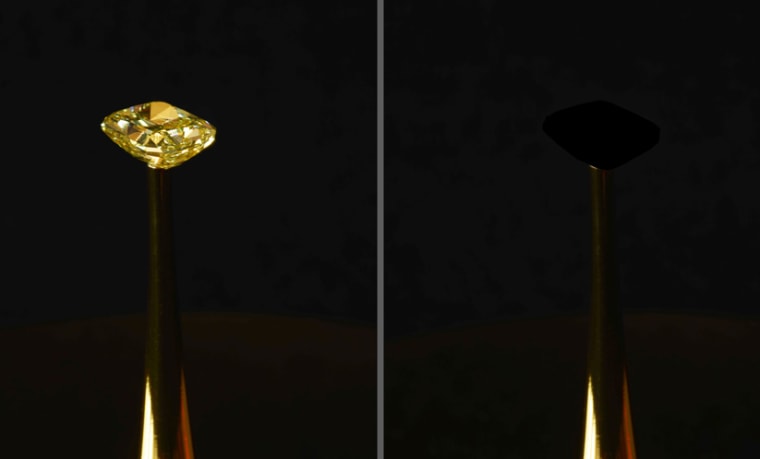Researchers at MIT have created what’s being called the blackest black ever — a new material that absorbs at least 99.995 percent of light that shines on it. The researchers made the ultrablack material by accident while looking for ways to improve the conductivity of carbon nanotubes, microscopic filaments with broad applications for energy storage and biomedicine.
“It was unexpected — like a proper scientific discovery,” said Brian Wardle, a professor of aeronautics and astronautics at MIT and the leader of the team of researchers who created the material. “We were working on a new way to grow nanotubes, and when you make a new material, its properties may be interesting.”
The material, described in a paper published online Sept. 12 in the journal ACS Applied Materials & Interfaces, is a sort of fuzzy chemical coating some 10 times darker than the previous record-holder. Wardle said it has generated strong interest among scientists and engineers, who see potential applications in astronomy and aerospace.
Space telescopes, for example, could use the material to block out stray light that can interfere with observations. “Optical instruments like cameras and telescopes have to get rid of unwanted glare, so you can see what you want to see,” John Mather, a senior astrophysicist at NASA’s Goddard Space Flight Center in Greenbelt, Maryland, who was not involved with the study, said in a statement. “Would you like to see an Earth orbiting another star? We need something very black.”
The new material is also of interest to artists. In fact, its remarkable optical properties came to light only when Diemut Strebe, an artist-in-residence at the MIT Center for Art, Science and Technology, asked Wardle’s team about the light-absorbing properties of various materials.
“We decided to look at a property we wouldn’t usually look at,” Wardle said.
Strebe used the carbon nanotube coating in a new art exhibit entitled “The Redemption of Vanity,” which features a $2-million, 17-carat yellow diamond cloaked in the material to become essentially invisible.
“We are presenting the literal devaluation of a diamond, which is highly symbolic and of high economic value,” Strebe said in a statement. “It presents a challenge to art market mechanisms on the one hand, while expressing at the same time questions of the value of art in a broader way.”
The exhibit opened at the New York Stock Exchange on Sept. 13 and will remain on view until Nov. 25.
Want more stories about science?
- An island imperiled: As their home melts, Greenlanders confront the fallout of climate change
- Are we living in a simulated universe? Here's what scientists say.
- A massive raft of volcanic rock could be heading toward Australia. That could be good news.
Sign up for the MACH newsletter and follow NBC News MACH on Twitter and Facebook and Instagram.


